- Home
- >
- Preservation Archaeology Blog
- >
- The Raymond F. Robinson Collection – A Successfu...
Jaye S. Smith, Robinson Collection Volunteer Co-Team Leader, Archaeology Southwest

(May 10, 2018)—A key element of Preservation Archaeology is a focus on working with existing collections and protecting sites still in the ground, as much as possible. Bringing rescued collections out of garages and closets and back into the larger archaeological world, where they can be studied and contribute to a better understanding of the past, is a particularly satisfying aspect of our work. In the fall of 2015, we had an exciting opportunity to do just that when colleagues from Northern Arizona University contacted us, asking if we might be able to help them protect what has turned out to be a remarkable collection of material from the Safford basin of southern Arizona.
Raymond F. Robinson was a geologist with a passion for archaeology. He worked in mining and exploration for ASARCO, Duval, Phelps Dodge, and other companies throughout the west. Robinson visited the Bonita Creek site with ranch owner Ray Claridge and esteemed Southwestern archaeologist Dr. Emil Haury sometime in 1958. It seems that during this general time period, Robinson was working with local ranch owners and archaeologists to identify sites and collect representative artifacts from the Safford region. He recorded at least basic site-level provenience information for most of the material collected.
Robinson curated this material in his home for over 50 years, but as he approached age 100, he became increasingly concerned for the final disposition of his collection. He did not want the material to be thrown away or sold on the open market to the highest bidder. His connections led him to Chris Downum and Kelley Hays-Gilpin at Northern Arizona University, who immediately recognized the importance of this collection. Chris and Kelley contacted Archaeology Southwest for assistance. Our friends at the Arizona State Museum agreed to accept the collection, with an agreement that Archaeology Southwest would partner with them to prepare the material for final curation. Thanks to the help of a number of colleagues throughout the Southwest, including donors who generously stepped up to help with the expenses of bringing the material from its location in Reno, Nevada, to Tucson, the collection found a new home in Tucson in the summer of 2016.
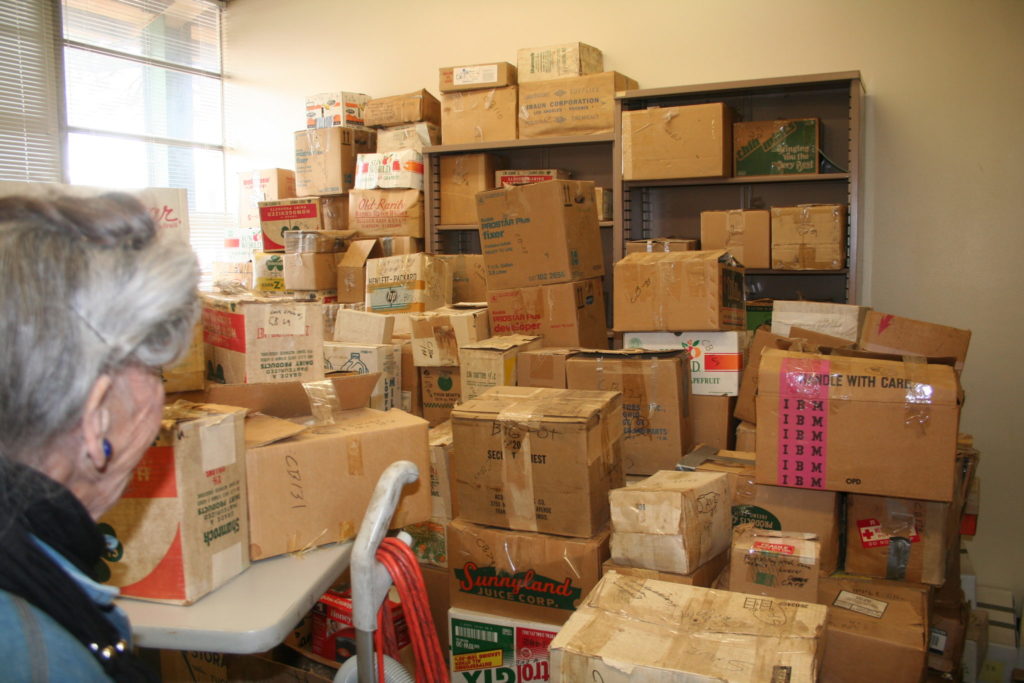
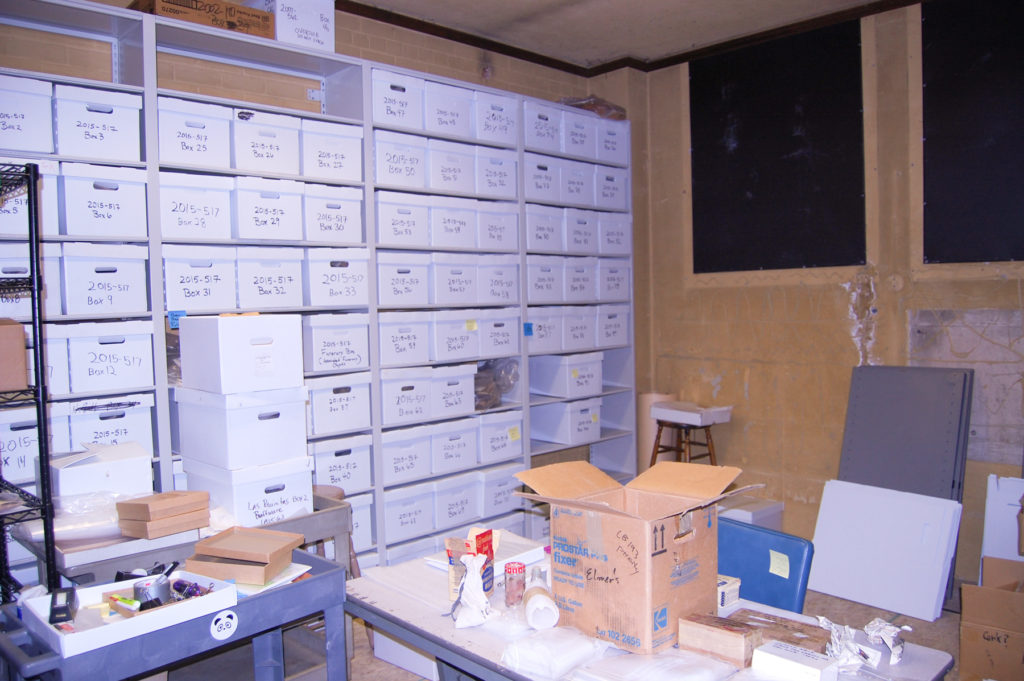
Many of the whole pots in the collection will spend time in the Arizona State Museum’s Conservation Lab, where conservation students and professionals are gaining valuable hands-on experience in removing the effects of years of masking tape, glue, plaster, and other coatings. Images: Courtesy of ASM Preservation
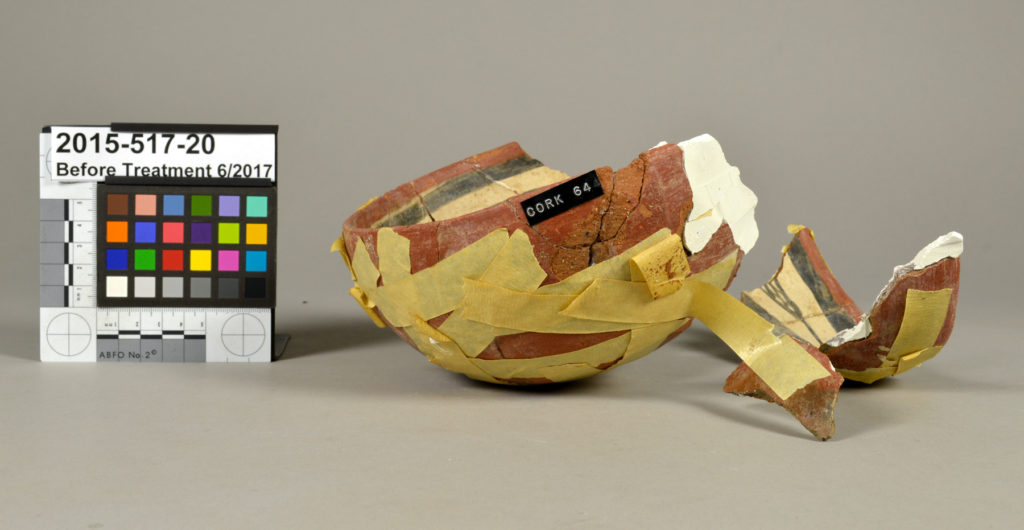
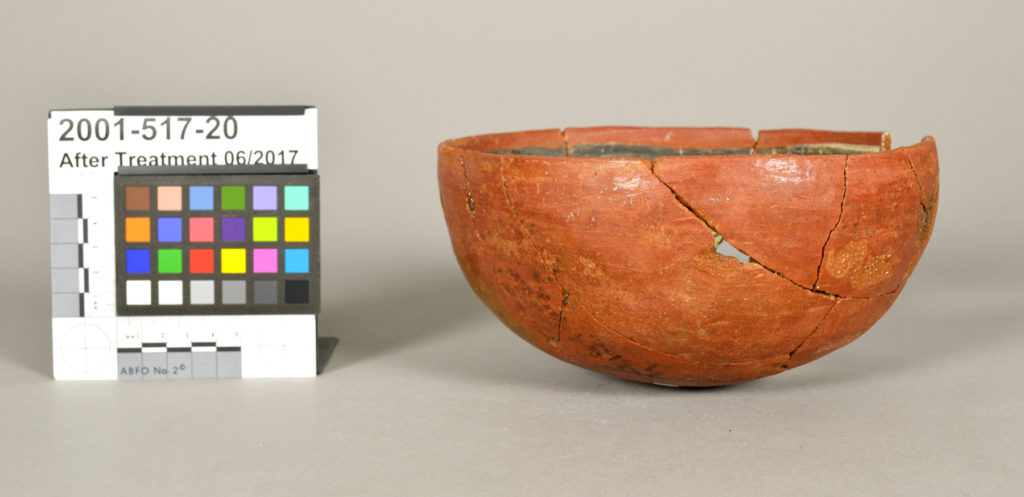
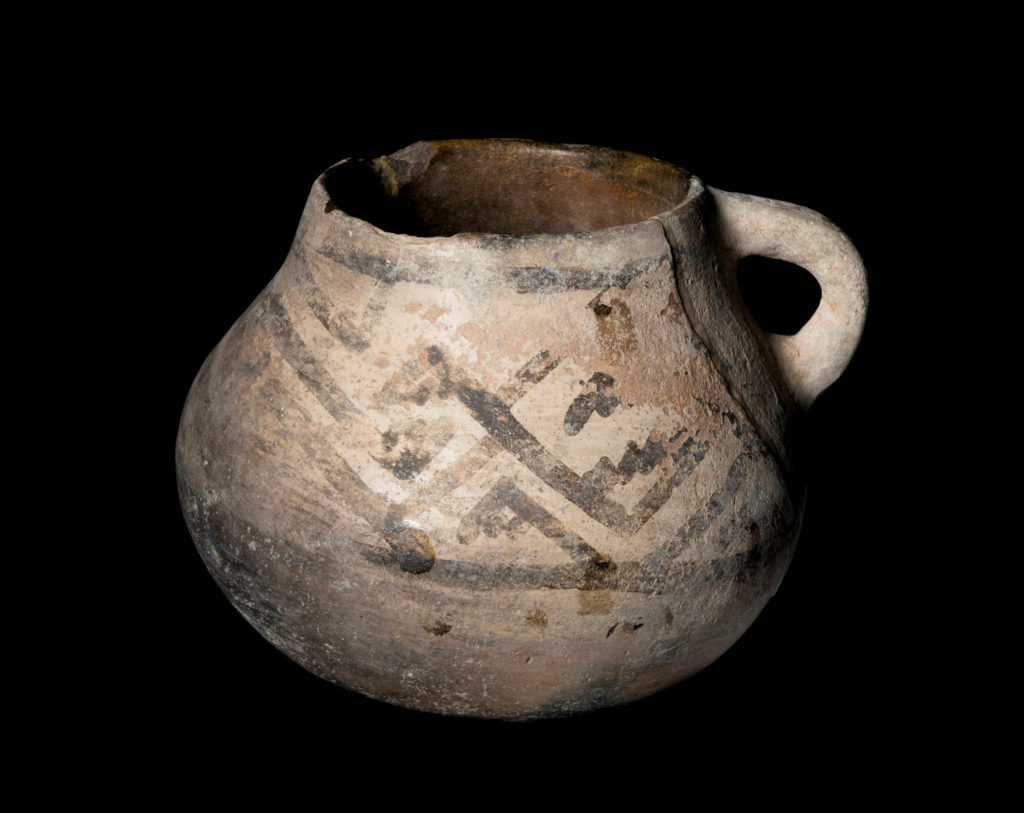
Much of the material in the Robinson collection appears to date to the Salado period, A.D. 1300–1450. Recent research by Archaeology Southwest and others suggests that the Safford area was an important destination for Kayenta immigrants from the Four Corners in the late 1200s. Because many sites in the Safford region have been lost due to historic and modern large-scale agricultural activities, this collection holds real potential for significant insights into this important time period in the southern Southwest.
So what’s next? We at Archaeology Southwest are busy preparing to start work cleaning, sorting, bagging, boxing, and analyzing the collection. And we’ll need the ongoing help of our volunteers to make this happen. We plan to begin this volunteer project in September 2018. If you’re a member of Archaeology Southwest and would like to be involved, you can read more about our plans and let us know you’re interested here.
The American Southwest Virtual Museum at Northern Arizona University has an online exhibit about the collection.
5 thoughts on “The Raymond F. Robinson Collection – A Successful Collaboration to Save Safford Basin Archaeological Artifacts”
Comments are closed.
I am Adele Conner, Ray Robinson’s daughter. I am so excited at what my dad discovered and that all of you have worked so hard to get the collection set up for research and display. Thank you
Hi Adele; it is our sincere privilege and honor to work on Ray’s collection. Its value going forward in regard to research and analysis of the Safford Basin is unparalleled. The assemblage holds so many surprises – I look forward to each day I have the privilege of working with it. Many thanks for the trust you have put into us to make sure Ray’s passion lives on for generations to come. Jaye
My father would be so happy that his love of archeology and the native american culture will be shared and appreciated by so many. We had some great experiences going on digs with him as young children. I am sure his heart is full of gratitude and pride.
Hi Deborah; Ray’s passion for preserving the archaeological record is on display during each lab session at Archaeology Southwest. Right now, we are focusing on his extensive notes and maps. If you have any particular remembrances you would like to share with, please reach out to us at ASW – we would love to hear from you. Jaye
I’m one of his grandchildren and had the privilege of seeing some of these artifacts in person since I lived with my grandparents in high school. He was so proud of what he had found and rightly so. Because of his passion and wanting to preserve his finds, you helped his dream of preserving and educating the way of Native American life which he loved dearly. Thank you!!!